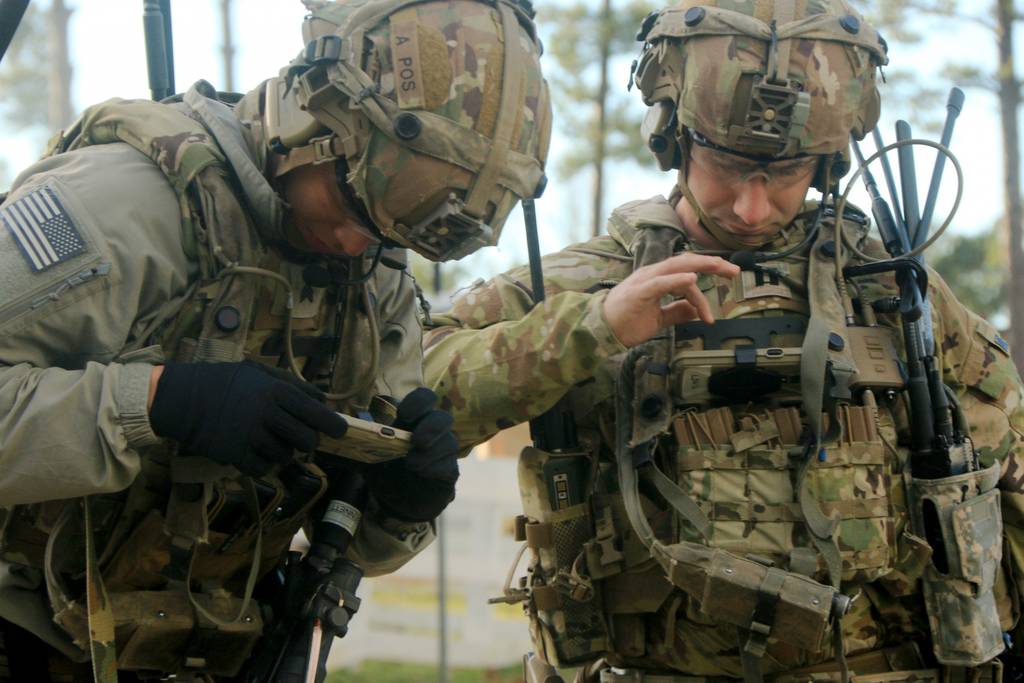WASHINGTON — The new director of the Army’s Network Cross-Functional Team has experienced the frontline frustrations of not being able to share data with partners from his stints with U.S. Central Command and in the Indo-Pacific.
So as Brig. Gen. Jeth Rey takes over the N-CFT he has a clear priority: Soldiers must be able to access data while sharing it with allies alongside them.
“It was definitely a struggle to share information and figure out how to have full interoperability between all the partners within the region,” Rey said of his time as commander of the 516th Signal Brigade based out of Fort Shafter, Hawaii. “I think that continues today.”
He faced a similar challenge has chief information officer and J6 of CENTCOM, he said. But as the U.S. pivots out of the Middle East and recalibrates on the Chinese military’s threat in the Indo-Pacific, it needs to deliver a resilient network that can pass and share data across dispersed land masses, while delivering the Army’s contribution to Joint All-Domain Command and Control. The Pentagon’s strategy to win future fights relies on the sharing sensor data across a connected, joint force and with allies.
As N-CFT director, Rey oversees the Army’s effort to build its future battlefield network by delivering new network tools to soldiers every two years in batches it calls capability sets. Rey said he doesn’t plan to make changes to that process.
Rey’s goal is to create a data-centric environment where the information is “reachable, understandable and secured, but is aggregated in a way that it can be rendered to the user at the edge.” Pushing data down to the individual soldier on the contested battlefield is “one of the most important” areas for the N-CFT, and its acquisition partner Program Executive Office for Command, Control, Communications-Tactical to deliver to soldiers, he said.
“How I believe we can do that is to create a transport-agnostic environment,” Rey said, relying on 5G, satellites in low Earth and medium Earth orbits, and other terrestrial transport options.
That’s particularly important in the Indo-Pacific region, which is more than 50 percent water and where military posts are spread across disconnected land. It’s an area where “network modernization … has always been a challenge,” said Rey, who started at the N-CFT two months ago.
To have adequate communications capability in the dispersed Indo-Pacific region, the tactical network team is focused on providing multiple transport options. Brig. Gen. Rob Collins, director of PEO C3T, said that communication in the Indo-Pacific region requires flexible and mobile networks. To achieve that, the N-CFT and PEO C3T are focused on space capabilities, as well as transmission and communications security with the pivot to the Indo-Pacific.
“We need to make sure that we maximize on the multilayered architecture, [not just] traditional just terrestrial reliance. We got to think air, we got to think space and even within space, multiple layers,” said Collins, who joined PEO C3T as its second director just over a year ago. Another challenge is “the weather over there and how we plan different elements of the spectrum operate differently in different aspects of the weather.”
The tactical network modernization team is progressing through fielding INDOPACOM-based units with new tactical network tools. The 3rd Brigade Combat Team of the 25th Infantry Division just received Capability Set ‘21, according to Paul Mehney, PEO C3T communications director. That brigade is the first INDOPACOM brigade fielded. Fielding of expeditionary signal battalion enhanced network gear is nearly complete for the South Korea-based 304th Expeditionary Signal Battalion. Mehney added that “multiple” INDOPACOM outfits have received more expeditionary network equipment in the last several years.
As the network team moves toward future capability sets, Rey wants to explore advanced tools that would provide secure data access to partners. New cybersecurity approaches, such as zero trust and identity, credential and access management, or ICAM), could help people access data securely and potentially allow work below the standard secret, releasable security enclave, meaning teams could share data more easily with partners.
“We have to look at policies and how our policies are restricting us as we’re sharing data, not only from our enterprise to our tactical environment but with our partners from a mission partner environment perspective,” Rey said, noting the policies have to be changed at the Pentagon level. “So that’s going to be something that we have to look across the board.”
To that end, the network team is working on a battlefield data fabric, a data management environment with common standards and tools that allows systems to easily data pass data back and forth. It’s a capability that the N-CFT tested out last year at Project Convergence, the Army’s new annual multidomain operations experiment. Collins called the data fabric “foundational” and said the environment needs to handle unstructured, semistructured and structured data.
In Rey’s words, the Army’s future tactical network must function like a bank’s network. Financial institutions have mountains of data from millions of customers, but they only share an individual’s data with an authorized user.
“We have to look at it in the same manner,” Rey said. “But again, I get back to: Our policies have to be able to be adjusted in order for us to share data from the enterprise all the way to the tactical and then in a mission partner, coalition partner [environment] as well.”
Andrew Eversden covers all things defense technology for C4ISRNET. He previously reported on federal IT and cybersecurity for Federal Times and Fifth Domain, and worked as a congressional reporting fellow for the Texas Tribune. He was also a Washington intern for the Durango Herald. Andrew is a graduate of American University.








